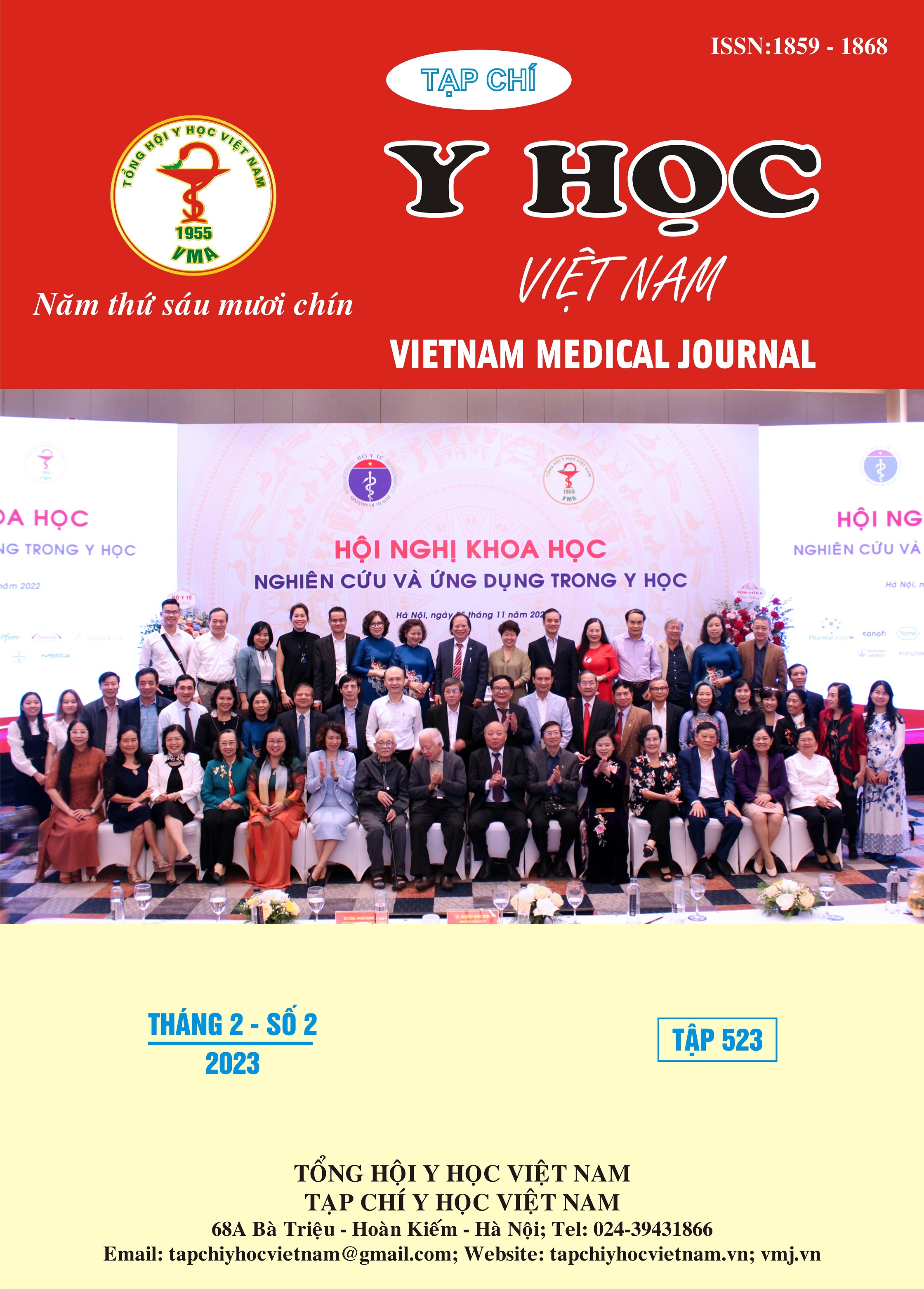MÔ TẢ ĐẶC ĐIỂM LÂM SÀNG CỦA BỆNH NHÂN THOÁI HÓA KHỚP GỐI NGUYÊN PHÁT ĐIỀU TRỊ TẠI KHOA Y HỌC CỔ TRUYỀN BỆNH VIỆN PHỤC HỒI CHỨC NĂNG HẢI DƯƠNG
Nội dung chính của bài viết
Tóm tắt
Mục tiêu: Mô tả đặc điểm lâm sàng của bệnh nhân thoái hóa khớp gối nguyên phát điều trị tại Khoa Y học cổ truyền Bệnh viện Phục hồi chức năng Hải Dương. Đối tượng và phương pháp nghiên cứu: Nghiên cứu mô tả tiến cứu trên 60 bệnh nhân thoái hóa khớp gối nguyên phát từ tháng 8 năm 2021 đến tháng 9 năm 2022. Bệnh nhân đủ tiêu chuẩn đưa vào nghiên cứu được tiến hành khám lâm sàng, lấy máu làm xét nghiệm và chụp Xquang khớp gối. Kết quả: Tuổi trung bình trong nghiên cứu là 64,55 ± 7,95 (tuổi); tỉ lệ nữ/nam là 2,5/1. Tỉ lệ bệnh nhân có chỉ số BMI xếp loại trung bình chiếm tỷ lệ cao nhất 63,3%, tiếp đến là thừa cân chiếm 25% và béo phì chiếm 5%. Bệnh nhân lao động trí óc chiếm tỷ lệ 55%, lao động chân tay chiếm 45%. Đau là triệu chứng quan trọng khiến người bệnh phải đi khám, trong nghiên cứu 100% bệnh nhân có dấu hiệu đau khớp gối; mức độ đau tính theo thang điểm VAS thì có 80% bệnh nhân đau nặng, 20% bệnh nhân đau vừa, điểm VAS trung bình của các bệnh nhân trong nghiên cứu là 6,8 ± 0,4. Phần lớn các bệnh nhân trong nghiên cứu có giới hạn tầm vận động ở mức trung bình chiếm 71,67%, mức nhẹ chiếm 20% và nặng chiếm 8,33%. Đánh giá khả năng vận động khớp gối theo thang điểm WOMAC, bệnh nhân chủ yếu ở mức độ kém chiếm 93,33%, còn lại là trung bình và khá. Nhóm bệnh nhân thoái hóa khớp gối giai đoạn II (theo Phân loại giai đoạn đánh giá mức độ thoái hóa khớp gối trên Xquang theo Kellgren và Lawrence năm 1987) chiếm chủ yếu 71,67%.
Chi tiết bài viết
Từ khóa
thoái hóa khớp gối
Tài liệu tham khảo
2. Deshpande BR, Katz JN, Solomon DH, et al. Number of Persons With Symptomatic Knee Osteoarthritis in the US: Impact of Race and Ethnicity, Age, Sex, and Obesity. Arthritis care & research. Dec 2016;68(12):1743-1750. doi: 10.1002/acr.22897
3. Nguyễn Vĩnh Ngọc, Trần Ngọc Ân, Nguyễn Thu Hiền. Đánh giá tình hình bệnh khớp tại khoa cơ xương khớp Bệnh viện Bạch Mai trong 10 năm (1991-2000). Hội thấp khớp học Việt Nam; 2002:263.
4. Anandacoomarasamy A, March L. Current evidence for osteoarthritis treatments. Therapeutic advances in musculoskeletal disease. Feb 2010;2(1):17-28. doi:10.1177/ 1759720x 09359889
5. Ho-Pham LT, Lai TQ, Mai LD, Doan MC, Pham HN, Nguyen TV. Prevalence of radiographic osteoarthritis of the knee and its relationship to self-reported pain. PLoS One. 2014;9(4):e94563. doi:10.1371/ journal.pone.0094563
6. Nguyễn Giang Thanh. Đánh giá hiệu quả điều trị thoái hóa khớp gối bằng phương pháp cấy chỉ Cagut kết hợp với bài thuốc Độc hoạt Tang ký sinh. Luận văn tốt nghiệp Bác sĩ Nội trú. Trường Đại học Y Hà Nội; 2012.
7. Bùi Hải Bình. Nghiên cứu điều trị bệnh thoái hóa khớp gối nguyên phát bằng liệu pháp huyết tương giàu tiểu cầu tự thân. Luận án Tiến sỹ Y Học. Đại học Y Hà Nội; 2016.
8. Hồ Nhật Minh. Đánh giá tác dụng cuả bài thuốc ý dĩ nhân thang kết hợp tứ diệu tán trong điều trị thoái hóa khớp gối có tràn dịch. Luận văn Thạc sỹ Y học Đại học Y Hà Nội; 2019.


